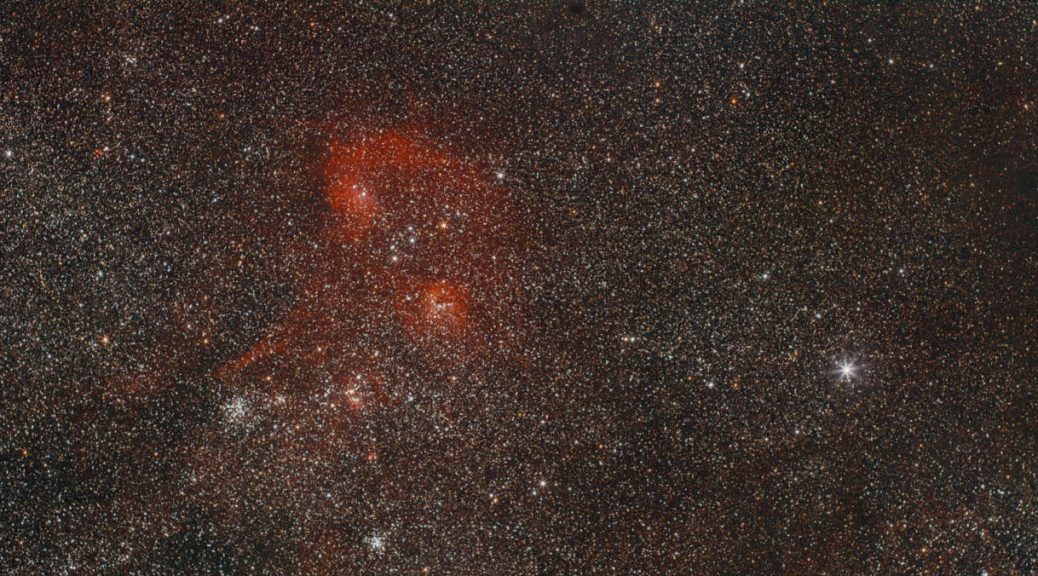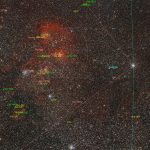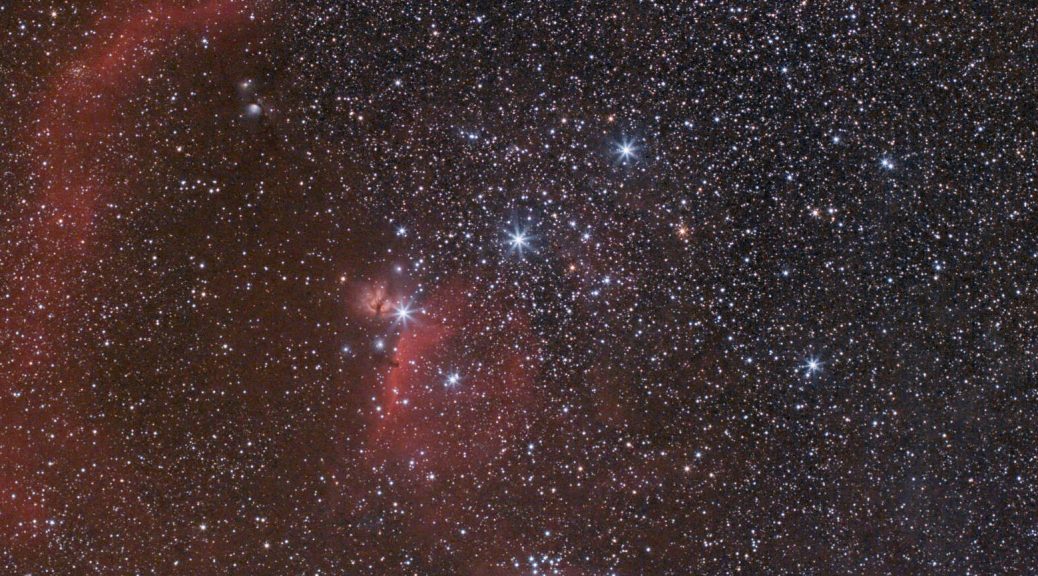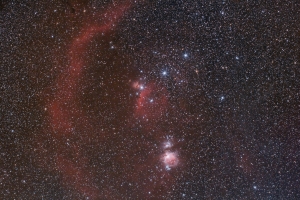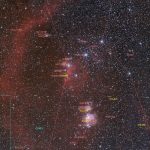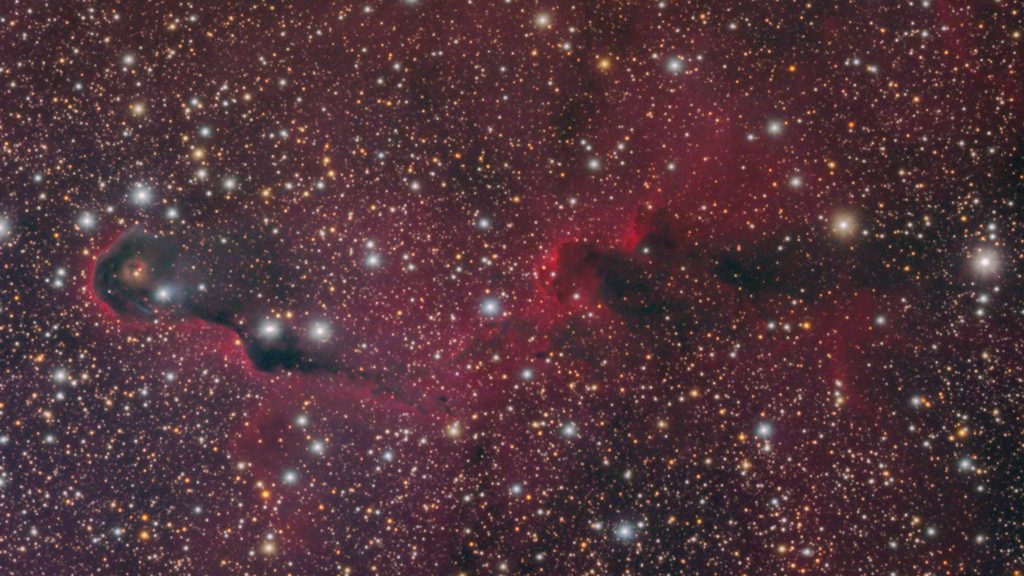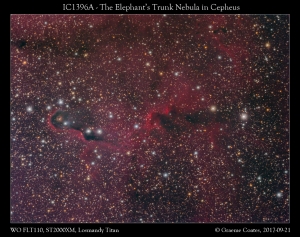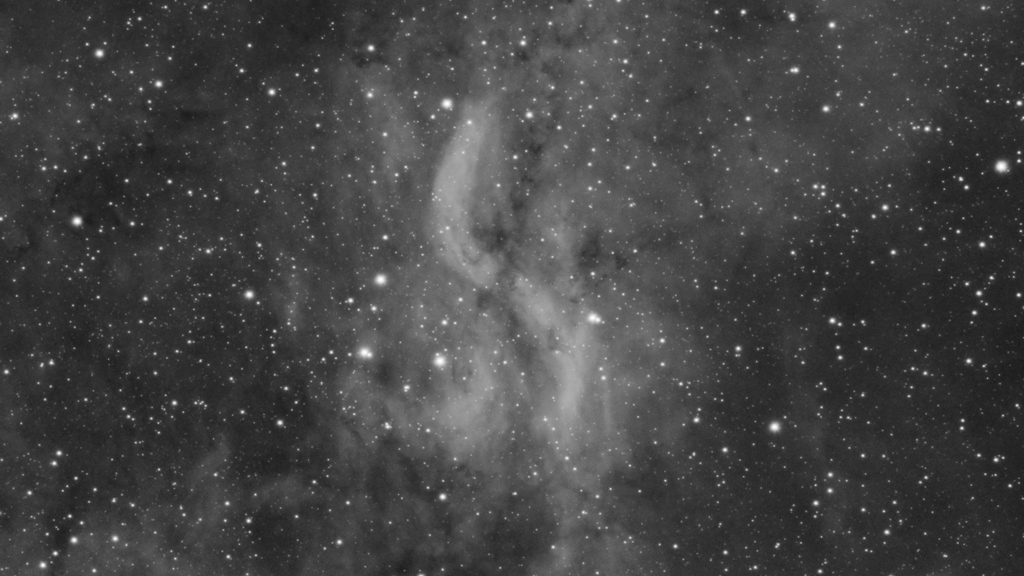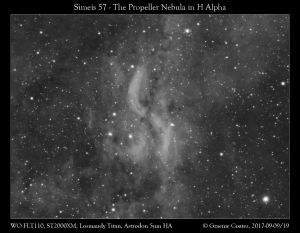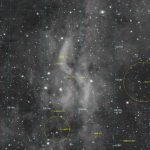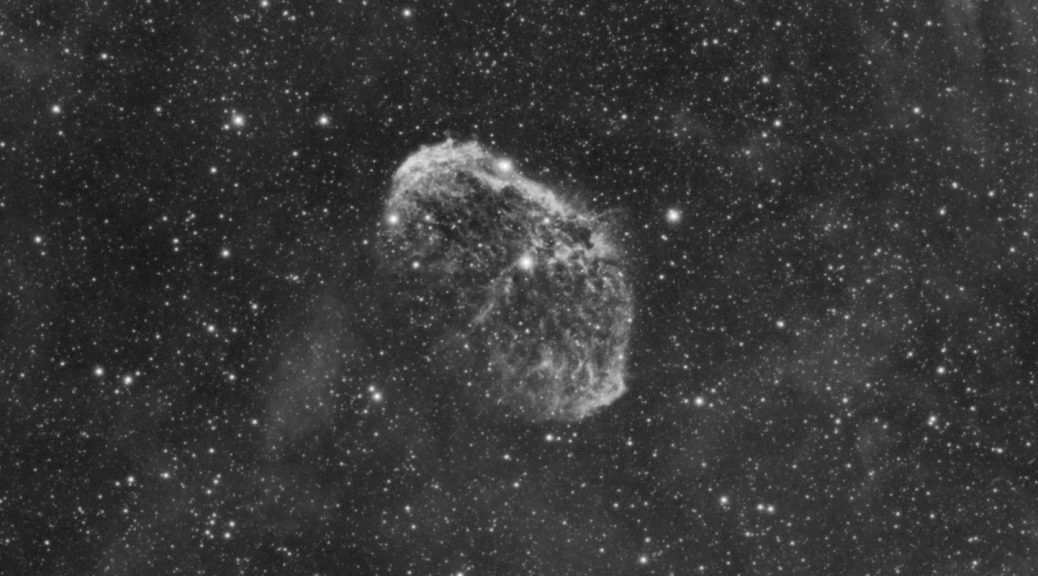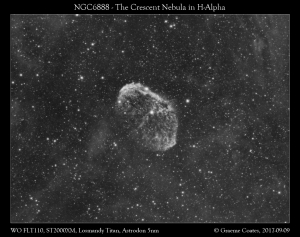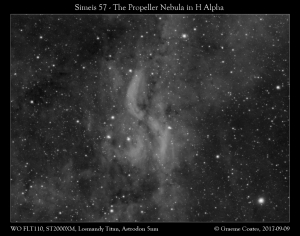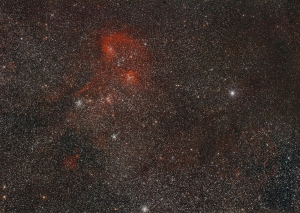 This image was taken on 11th December which was a clear and very cold night (-8C) though skies weren’t as great as they could have been, despite the temperature. A covering of snow from a couple of days before always seems to make for much brighter skies than we’d have otherwise.
This image was taken on 11th December which was a clear and very cold night (-8C) though skies weren’t as great as they could have been, despite the temperature. A covering of snow from a couple of days before always seems to make for much brighter skies than we’d have otherwise.
I imaged the area around the Flaming Star Neb (IC405) using my modded 350d + Canon 85mm EF combination. This image is 79x5min (6h35m total) at f4, ISO 400, taken through an IDAS P2 filter. This lens is a bit sharper at f4.5, but wanted to try and get as much signal as poss, without completely ruining the stars in the corners of the image. Reduction and processing as usual in PixInsight and Photoshop CS4.
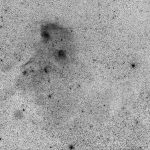
I offset the framing to have a go at getting the SN remnant Simeis 147, the Spaghetti nebula (Sh2-240). Bearing in mind this is a non narrowband image with an uncooled camera, I’m fairly pleased to see it there (though it is very faint!). It’s a bit clearer in the negative image of the red channel as shown (bottom right) Most definitely one for an H-Alpha filter attempt with a more suitable camera (mono, cooled, low read noise, etc.)! It would have been nice to have M37 not quite so close to the edge though…
There are lots of other objects in this 15°x10° view, including IC410, M36/37/38, several other Sharpless-2 objects, and dark nebulae. These are highlighted in the annotated image as shown, though there are other objects in the field of view. For example, the obscure “DU77” just to the left (north) of Simeis 147 is just visible in the colour image, and a bit clearer in the negative.
